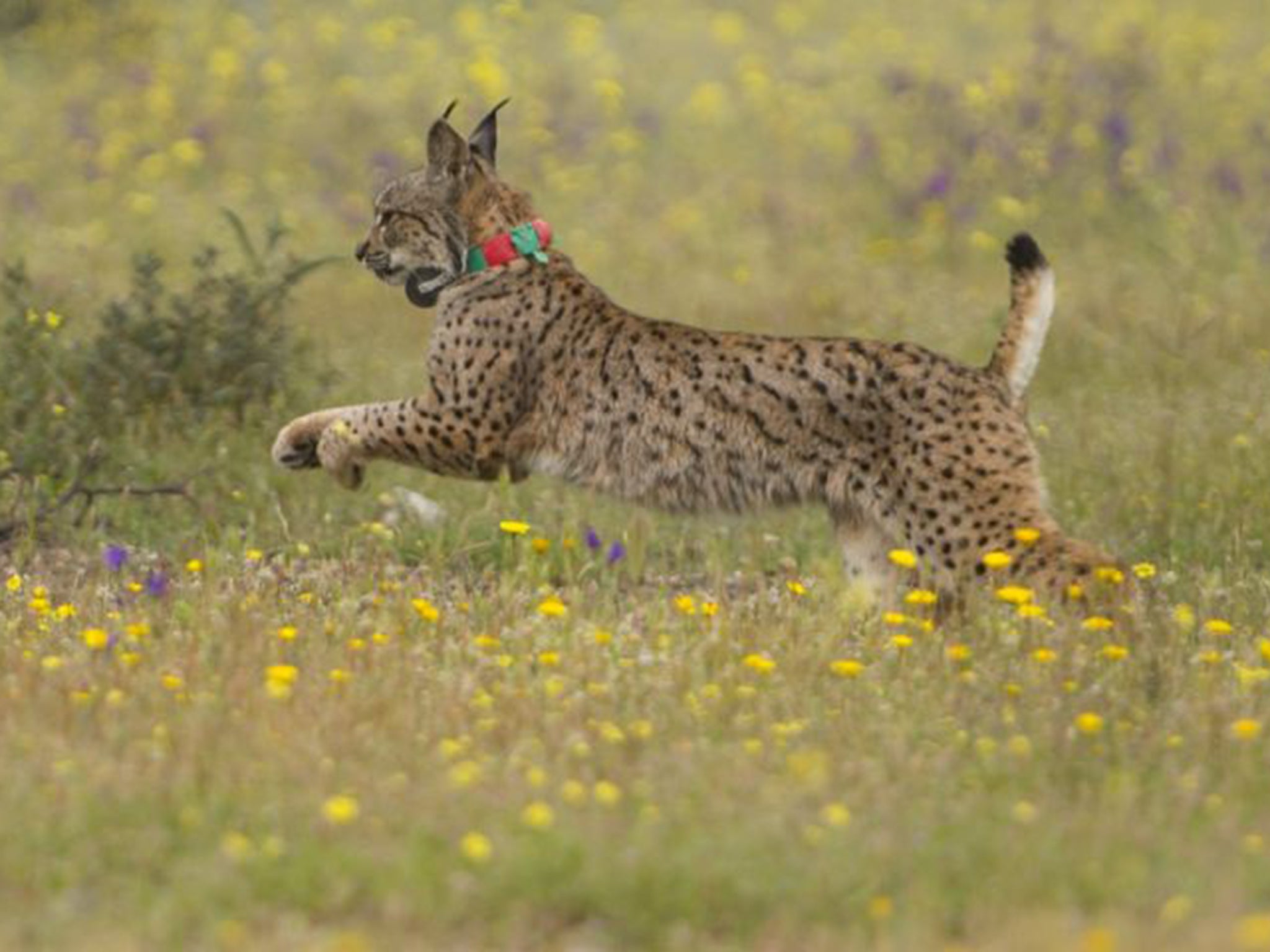Iberian lynx cubs born in the wild bring hope for the world's most endangered feline species
At least two cubs were spotted last week by monitors who have been tracking the progress of a female lynx, Kodiak, released into the wild two years ago

Conservation groups have hailed the birth of two Iberian lynx cubs as a breakthrough in a costly project to save a species that many fear could become the first feline mammal to die out for 2,000 years.
The births are believed to be the first in the wild for decades outside Andalusia, where the partly EU-financed project to save the species was launched 12 years ago, after its numbers had fallen to fewer than 100 in the wild.
It is now believed that there are at least 300, a significant improvement on previous estimates, but still so few that the Iberian lynx remains a threatened species. The fact that at least one pair has now bred in the vicinity of Badajoz, in western Spain, suggests that the animal may now be re-establishing itself across a wider area.
Critically endangered species
Show all 10At least two cubs were spotted last week by monitors who have been tracking the progress of a female lynx, Kodiak, released into the wild two years ago. It is hoped that Kodiak may have given birth to more cubs. “Females tend to have up to three in a litter,” said a spokeswoman from Iberlince, the group that runs the programme. According to the World Wildlife Federation, the animal “is the world’s most endangered feline species”. The still small number of animals is not sufficient for the survival of the species in the long term, putting it on the brink of extinction.
The Iberian lynx is one of two that is indigenous to Europe. The slightly larger Eurasian lynx had also largely been killed off across the continent until recent efforts to reintroduce it into the forests in central and eastern Europe. As its name suggests, the Iberian lynx is only found in Spain and Portugal. It has been badly hit by drought in southern Spain, that has led to a fall in the rabbit population, which forms its staple diet. Moreover, as the search for food has taken the lynx further away from reservations, 46 have been killed by cars since 2012.
The survival of the Iberian lynx has become a cause célèbre in Spain in recent years. Political, and even royal, figures have got behind the animal’s survival and rarely does an official miss the opportunity to be photographed at the release of a lynx into the wild.
The project to save the animal was initially funded by the Andalusian government and the EU, with 40 per cent of the annual €26m (£19m) budget coming from Brussels. The latest phase, which has led to the introduction of 22 lynxes in the central Castilla-La Mancha region over the last year, has provided 32,000 hectares of reserved hunting ground for the animals.
Subscribe to Independent Premium to bookmark this article
Want to bookmark your favourite articles and stories to read or reference later? Start your Independent Premium subscription today.

Join our commenting forum
Join thought-provoking conversations, follow other Independent readers and see their replies